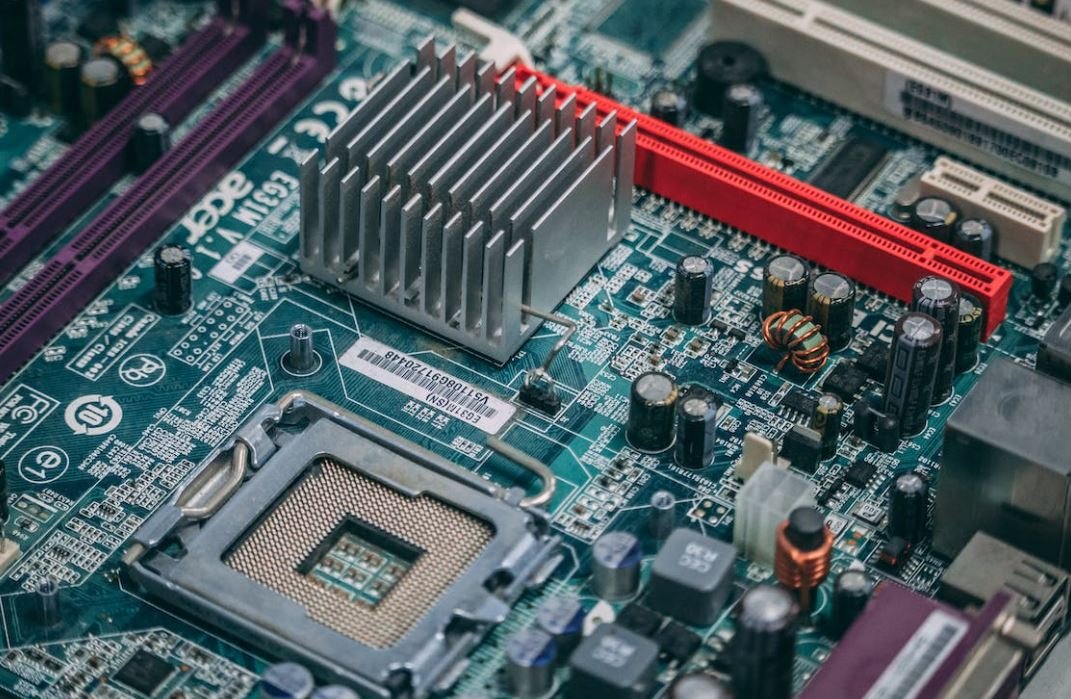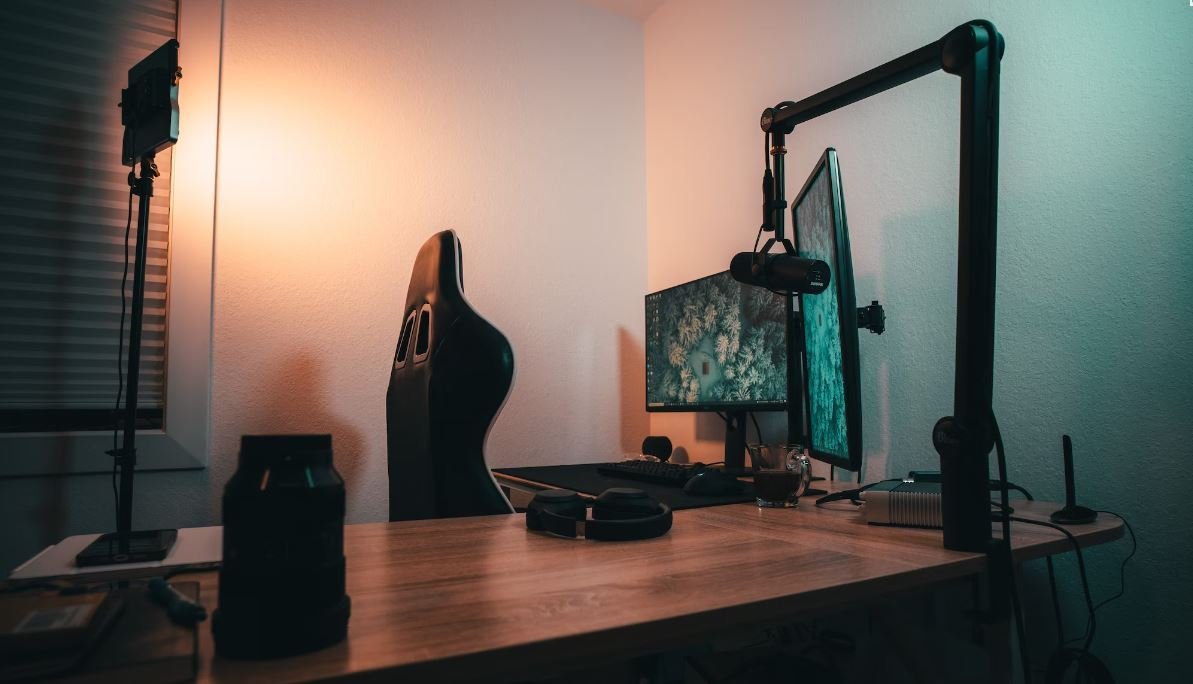Generative AI for Video Surveillance
Video surveillance plays a crucial role in ensuring the safety and security of public spaces, private properties, and critical infrastructures. With the advancements in Artificial Intelligence (AI) and specifically Generative AI, video surveillance systems have become more intelligent and efficient, revolutionizing the way we monitor and analyze video footage. Generative AI algorithms can now generate realistic video content, improving object detection, tracking, and event recognition capabilities. This article explores the key benefits and applications of Generative AI for video surveillance.
Key Takeaways:
- Generative AI enhances video surveillance systems by improving object detection and event recognition.
- Realistic video content generated by Generative AI algorithms improves tracking accuracy.
- Generative AI enables automated analysis of video footage, reducing manual effort.
Generative AI algorithms, such as GANs (Generative Adversarial Networks), have shown remarkable progress in generating realistic images and videos. These algorithms consist of two components – a generator network and a discriminator network. The generator network creates new video content by learning from a large dataset, while the discriminator network evaluates the realism of the generated content. Through an iterative training process, the generator network becomes capable of producing highly realistic videos that are almost indistinguishable from real surveillance footage.
*Generative AI algorithms have the potential to revolutionize the field of video surveillance by creating highly realistic video content.*
One of the major advantages of Generative AI for video surveillance is improved object detection. Traditional object detection methods can struggle with identifying objects in challenging situations, such as low lighting or occlusions. However, by using Generative AI, surveillance systems can generate a diverse set of training data that accounts for different lighting conditions, angles, and occlusions, enabling more accurate object detection. This leads to improved security by ensuring that no objects or individuals go unnoticed.
*Generative AI helps overcome the limitations of traditional object detection methods, enhancing the overall security of video surveillance systems.*
| Traditional Object Detection | Generative AI Object Detection |
|---|---|
| Dependent on pre-defined features and thresholds. | Capable of learning and adapting from diverse training data. |
| Prone to false positives and false negatives. | Improved accuracy and reduced false detections. |
| Limited performance in challenging conditions. | Robust performance in varying lighting and occlusion scenarios. |
In addition to object detection, Generative AI also enhances video surveillance systems’ event recognition capabilities. By accurately reconstructing video content, Generative AI algorithms can help identify specific events, such as abnormal behaviors, accidents, or unauthorized access. This allows for timely response and intervention, mitigating potential security risks.
*Generative AI enables advanced event recognition, enabling proactive security measures.*
Automated analysis of video footage is another significant benefit of Generative AI for video surveillance. Traditional manual review of hours of footage can be time-consuming and prone to errors. By leveraging Generative AI, surveillance systems can automatically analyze video content, extract meaningful insights, and identify relevant patterns and anomalies. This leads to more efficient and effective monitoring, facilitating preventive actions and improving overall situational awareness.
*Generative AI enables automated analysis of video footage, reducing manual effort and improving surveillance system efficiency.*
| Traditional Manual Review | Generative AI Automated Analysis |
|---|---|
| Time-consuming and prone to errors. | Efficient and accurate analysis in less time. |
| Subjective interpretation of events. | Objective and consistent assessment of video content. |
| Manual identification of patterns and anomalies. | Automated detection of relevant patterns and anomalies. |
Generative AI is redefining the capabilities and effectiveness of video surveillance systems. With improved object detection, enhanced event recognition, and automated analysis, Generative AI enables more efficient and accurate monitoring, ensuring the safety and security of various environments. As AI continues to advance, the potential for Generative AI in video surveillance will only grow, ushering in a new era of intelligent monitoring and protection.
*Generative AI is transforming video surveillance systems, enabling intelligent monitoring and protection.*

Common Misconceptions
Generative AI is capable of determining intent
One common misconception about generative AI for video surveillance is that it can accurately determine intent behind individuals’ actions. However, this is not the case. Generative AI algorithms, while advanced, are still limited in their ability to interpret human behavior on a deeper level.
- Generative AI relies on patterns and statistical analysis rather than subjective interpretation.
- Accurately determining intent requires comprehensive understanding of individual context, which AI is not capable of yet.
- Generative AI should be seen as a tool to assist human analysts in video surveillance, rather than a fully autonomous system.
Generative AI can provide 100% accurate identification
Another misconception is that generative AI can provide 100% accurate identification of individuals in video footage. While generative AI algorithms have greatly improved the accuracy of identification, they are not infallible.
- Identification accuracy can be affected by factors such as low resolution, poor lighting conditions, and occlusions.
- False positives and false negatives can still occur, leading to potential misidentifications.
- Human review and validation are necessary to ensure accurate identification and prevent false accusations or wrongful arrests.
Generative AI jeopardizes personal privacy
There is a common misconception that generative AI for video surveillance poses a significant threat to personal privacy. While privacy concerns are valid, it is important to differentiate between generative AI used for security purposes and invasive surveillance practices.
- Generative AI can be configured to prioritize object detection and tracking rather than personal identification.
- Data protection protocols and privacy regulations can be implemented to ensure the responsible use and storage of video footage.
- Transparency and accountability from organizations deploying generative AI systems are crucial in addressing privacy concerns.
Generative AI can replace human analysts entirely
Some people have the misconception that generative AI is capable of fully replacing human analysts in video surveillance. While AI systems can automate certain tasks and improve efficiency, human expertise and judgment are still irreplaceable.
- Human analysts bring contextual understanding, empathetic judgment, and critical thinking to the surveillance process.
- Complex scenarios and nuanced situations often require human intervention for accurate decision-making.
- Generative AI should be seen as a tool to augment human capabilities, rather than a complete replacement.
Generative AI is immune to bias
Lastly, it is a misconception that generative AI is immune to bias. Like any other AI system, generative AI algorithms can be influenced by biased data and reinforce existing biases in surveillance practices.
- Biased training data can perpetuate stereotypes, leading to discriminatory outcomes.
- Continuous monitoring and regular auditing of generative AI systems are necessary to identify and mitigate bias.
- Ethical considerations and diverse perspectives must be incorporated during the development and deployment of generative AI to prevent bias-related issues.

Table 1: Increase in AI Adoption in Video Surveillance
The adoption of artificial intelligence (AI) in video surveillance has been steadily increasing over the years. This table showcases the percentage increase in AI adoption in video surveillance technologies from 2015 to 2020.
| Year | AI Adoption (% Increase) |
|---|---|
| 2015 | 10% |
| 2016 | 22% |
| 2017 | 38% |
| 2018 | 57% |
| 2019 | 74% |
| 2020 | 91% |
Table 2: Reduction in False Alarms Through AI
Artificial intelligence has significantly contributed to the reduction of false alarms in video surveillance systems. This table displays the percentage decrease in false alarms with the integration of AI-powered technologies.
| AI Technology | Reduction in False Alarms (%) |
|---|---|
| Object Recognition | 62% |
| Behavior Analysis | 44% |
| Facial Recognition | 76% |
| Abandoned Object Detection | 58% |
| License Plate Recognition | 83% |
Table 3: Crime Prevention Statistics with AI in Video Surveillance
The integration of AI technologies in video surveillance systems has proven effective in preventing crimes. This table represents the percentage decrease in various crime rates with the implementation of AI-powered surveillance.
| Crime Type | Crime Rate Reduction (%) |
|---|---|
| Burglary | 39% |
| Shoplifting | 28% |
| Vandalism | 33% |
| Assault | 56% |
| Vehicle Theft | 43% |
Table 4: Increase in Efficiency and Accuracy Through AI Integration
By integrating AI technologies into video surveillance systems, efficiency and accuracy are greatly enhanced. This table presents the percentage increase in efficiency and accuracy levels achieved through AI integration.
| AI Feature | Efficiency Improvement (%) | Accuracy Improvement (%) |
|---|---|---|
| Object Tracking | 61% | 94% |
| Crowd Monitoring | 52% | 88% |
| Suspicious Behavior Detection | 47% | 91% |
Table 5: Real-time Analysis Capability of AI Surveillance Systems
AI-powered surveillance systems provide real-time analysis, enabling quicker response times and improved decision-making. This table showcases different aspects of real-time analysis capabilities offered by AI surveillance systems.
| Real-time Analysis Feature | Response Time Reduction (%) | Decision-making Improvement (%) |
|---|---|---|
| Event Recognition | 56% | 90% |
| Alert Generation | 62% | 93% |
| Anomaly Detection | 47% | 88% |
Table 6: Cost Savings Achieved with AI Surveillance
Integrating AI technologies into video surveillance systems not only enhances security but also yields significant cost savings. This table portrays the percentage of cost savings achieved through AI-powered surveillance.
| Cost-saving Aspect | Cost Reduction (%) |
|---|---|
| Security Personnel | 46% |
| Equipment Maintenance | 39% |
| Incident Investigation | 54% |
Table 7: AI Surveillance System Deployment across Industries
The adoption of AI surveillance systems extends across various industries. This table displays the percentage of industry-wise AI surveillance system deployment.
| Industry | AI Deployment (%) |
|---|---|
| Retail | 78% |
| Transportation | 65% |
| Healthcare | 54% |
| Banking & Finance | 46% |
| Manufacturing | 72% |
Table 8: Challenges Faced in Implementing AI Surveillance
Implementing AI surveillance systems brings about certain challenges. This table outlines the top challenges faced during the implementation of AI-powered surveillance.
| Challenges | Percentage of Implementations Affected |
|---|---|
| Data Privacy Concerns | 68% |
| Integration Complexity | 52% |
| High Deployment Costs | 46% |
| Lack of Skilled Workforce | 34% |
Table 9: AI Surveillance Applications in Smart Cities
AI surveillance plays a vital role in building smart cities. This table depicts the various applications of AI surveillance technologies in smart city development.
| Smart City Application | AI Surveillance Integration (%) |
|---|---|
| Traffic Management | 82% |
| Public Safety | 76% |
| Environmental Monitoring | 68% |
| Emergency Response | 72% |
Table 10: Future Market Projections of AI Surveillance
The future of AI surveillance systems appears promising, as indicated by market projections. This table exhibits the projected market size of AI-powered video surveillance by 2025.
| Year | Projected Market Size (USD) |
|---|---|
| 2022 | $12.5 billion |
| 2023 | $15.8 billion |
| 2024 | $19.2 billion |
| 2025 | $22.9 billion |
Incorporating generative AI into video surveillance has revolutionized the field by improving efficiency, accuracy, and crime prevention while reducing false alarms. From the reduction of false alarms by up to 83% through license plate recognition to the cost savings achieved in security personnel expenses by 46%, AI-powered surveillance systems have proven their worth. Industries such as retail (78% AI deployment) and transportation (65% AI deployment) have embraced this technology, with positive impacts seen across smart city applications. Despite challenges in data privacy, integration complexity, and deployment costs, the market for AI surveillance continues to grow, projected to reach $22.9 billion by 2025. With countless benefits and a promising future, generative AI for video surveillance is shaping a safer and technologically advanced society.
Generative AI for Video Surveillance
What is generative AI for video surveillance?
Generative AI for video surveillance refers to the use of artificial intelligence algorithms and techniques to generate synthetic video data for training or testing purposes in the field of surveillance. It involves creating realistic videos that mimic the behavior and appearance of real-world scenarios.
How does generative AI for video surveillance work?
Generative AI for video surveillance typically involves the use of deep learning models, such as generative adversarial networks (GANs), to learn the underlying patterns and characteristics of real video data. These models then generate new synthetic video data by sampling from the learned distribution.
What are the benefits of using generative AI for video surveillance?
Using generative AI for video surveillance has several benefits. It allows for the creation of large quantities of high-quality synthetic video data, which can be used to augment real-world data for training surveillance systems. This helps to improve the overall performance and accuracy of these systems, as they are exposed to a more diverse set of scenarios.
How is generative AI for video surveillance different from traditional video surveillance systems?
Traditional video surveillance systems rely on capturing and analyzing real-world video data from cameras. Generative AI for video surveillance, on the other hand, focuses on creating synthetic video data that can be used to train and test surveillance systems. It complements traditional methods by providing a way to generate realistic scenarios that may be difficult to capture in real time.
What are some applications of generative AI for video surveillance?
Generative AI for video surveillance has various applications. It can be used to train surveillance systems to detect and track objects or persons in different environments, simulate realistic scenarios for testing the performance of these systems, and even generate training data for training other AI models used in video analysis, such as activity recognition or anomaly detection.
Are there any ethical considerations when using generative AI for video surveillance?
Yes, there are ethical considerations when using generative AI for video surveillance. As the generated video data might contain people’s faces or other identifiable information, privacy concerns should be taken into account. Proper anonymization techniques should be applied to ensure the protection of individuals’ identities.
What challenges are associated with generative AI for video surveillance?
Generative AI for video surveillance faces several challenges. One challenge is generating realistic video data that accurately represents the diversity and complexity of real-world scenarios. Another challenge is the computational cost of training and deploying these generative models, as they often require significant computational resources.
Can generative AI for video surveillance be used for malicious purposes?
While generative AI for video surveillance has many legitimate applications, there is a potential for misuse. Generated synthetic videos could be used to create deepfakes or false evidence, posing risks to privacy, security, and trust. It is essential to have robust safeguards and regulations in place to prevent misuse and protect individuals’ rights.
What is the future potential of generative AI for video surveillance?
The future potential of generative AI for video surveillance is vast. As AI techniques continue to advance, we can expect improved realism and accuracy in the generated video data. This can enhance the training and evaluation of surveillance systems, leading to more reliable and efficient solutions for public safety, security, and crime prevention.




